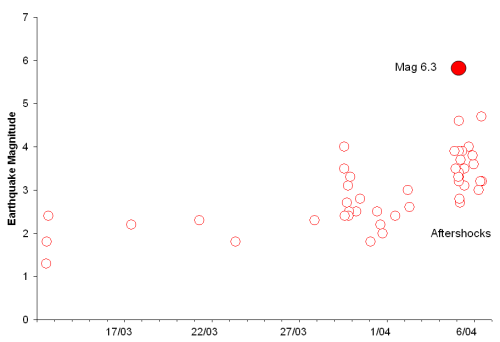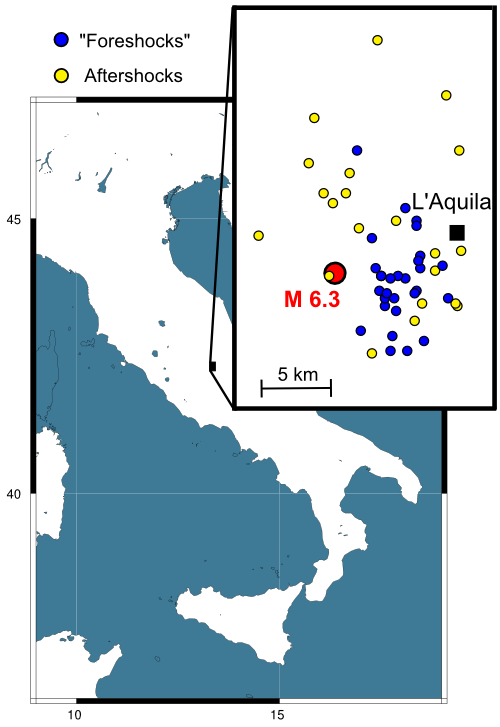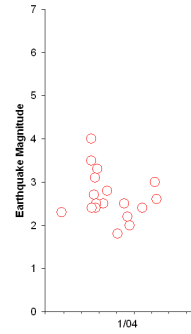Before everyone started talking about radon gas, I was pretty sure I heard a report on the radio talking about Monday’s earthquake near L’Aquila being preceded by a number of foreshocks. I’ve discussed before how there’s nothing intrinsically ‘foreshocky’ about “foreshocks” (or “aftershocky” about “aftershocks” for that matter) beyond the fact that they occurred shortly before (or after, in the case of aftershocks) a bigger earthquake in the same region. Using data made available by INGV, below I’ve plotted the magnitudes of all the earthquakes that have occurred in this region in the last month, with the magnitude 6.3* on Monday morning marked by the larger solid red circle

From this we can see that there was a few days of enhanced seismic activity, including about half a dozen magnitude 3-4 earthquakes, beginning about a week before the main shock and apparently stopping on the 3rd April. We can also plot the initial rupture locations of all these earthquakes, with blue dots marking ones that occurred before Monday’s earthquake (red dot) , and yellow dots the locations of the aftershocks.

The “foreshocks” mainly form a nice little cluster to the southeast of Monday’s big shock, which suggests they are all related to each other (it’s no surprise that they’re much more tightly clustered than the aftershocks, because the much higher amount of energy released by the main shock would have induced stress changes over a much wider area). It also suggests that these earlier earthquakes may have had a direct influence on Monday’s 6.3; the focal mechanism suggests it occurred on a northwest-southeast trending fault. This earlier cluster could therefore represent activity on an adjacent section of the same fault, producing additional stresses which eventually led to a rupture on Monday.
Note that again, this reasoning is all after the fact; even if there is a direct relationship, if you just looked at the earthquake record from the 28th March to the 3rd April, would you have been able to predict that a larger earthquake was on the way in this region?

I certainly wouldn’t have; if anything, I would have said that activity had peaked and was fading back to a background level. Such are the risks of trying to predict earthquakes.
*I’m using the USGS magnitude, although the Italians have estimated it as a 5.8, presumably using their local seismograph network rather than the global one, and (I think) using a different magnitude calculation.



Comments (9)